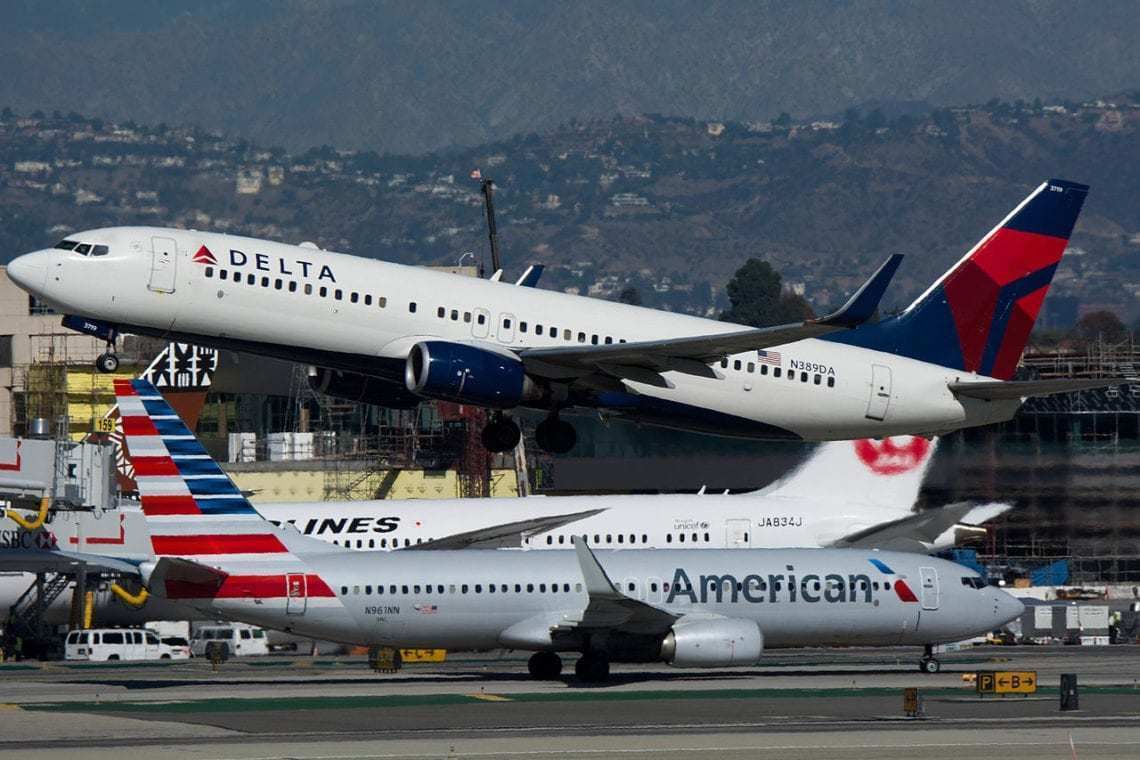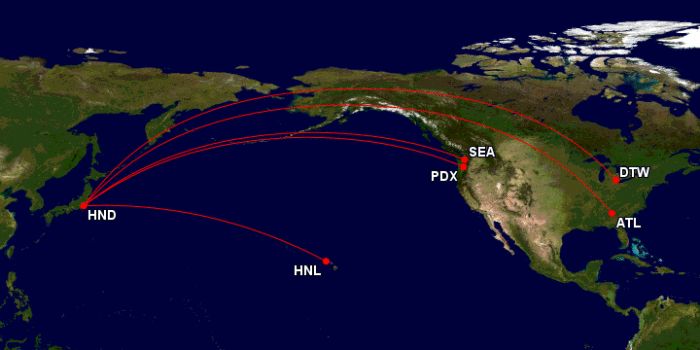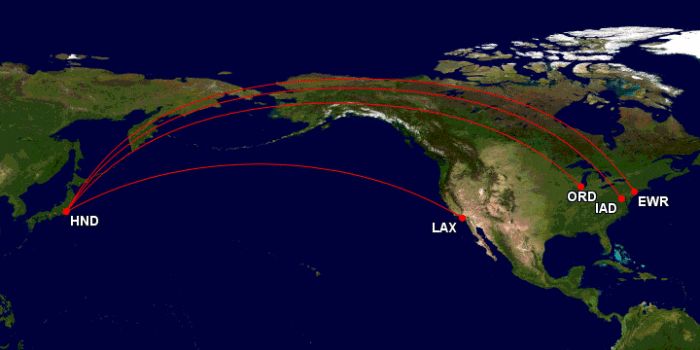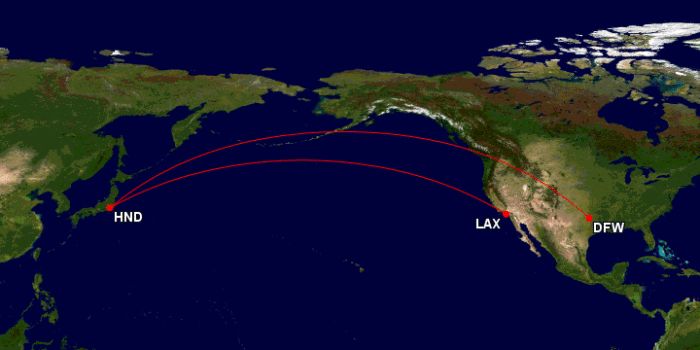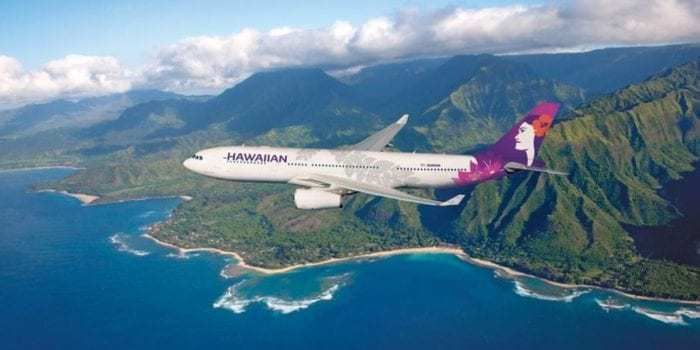The US Department of Transportation (DOT) has given a provisional awarding of new daytime slots at Tokyo Haneda airport. Altogether, 12 slots were up for grabs, which have been shared out between four US carriers. The tentative granting of slots was made on 16th May and will be confirmed sometime after June 10th.
Additional daytime landing slots were opened at Tokyo’s Haneda airport in light of the coming 2020 Tokyo Olympics. By awarding these slots this year, it is hoped that airlines will be able to put additional services in place in time for the summer 2020 games.
Overall there were 12 slots freed up for allocation. Between them, American Airlines, Delta, United and Hawaiian applied for 19. This meant there were going to be winners and losers in the allocation process. DOT makes decisions based on the benefit to passengers of the new routes, as well as how the carriers prioritize the importance of each one.
Let’s take a look at the results
Delta’s big win
Delta have really done well out of the Haneda slot allocation, having requested six of the new slots and been granted five. These are:
- A daily flight from Atlanta (ATL) using Boeing 777-200
- A daily flight from Detroit (DTW) using an Airbus A350-900
- A daily flight from Seattle (SEA) using an A330-900neo
- A daily flight from Portland (PDX) using an A330-200
- A daily flight from Honolulu (HNL) using a 767-300
They had applied for a second slot from Honolulu but were not granted it. Considering there are already a good number of connections from Honolulu to Tokyo by other airlines, it’s not entirely surprising.
Delta already fly to Tokyo Haneda from Minneapolis / St. Paul and from Los Angeles. They also fly to Narita from Hartsfield-Jackson. At this stage, it’s not clear whether they will continue this service or bin it in favor of the Haneda route they’ve been granted.
Steve Sear, President – International and Executive Vice President - Global Sales at Delta said in a press release,
“This preliminary order demonstrates the DOT’s commitment to encouraging competition and providing more choice for customers traveling between the U.S. and Tokyo’s city center. This service will allow Delta to combine its superior service, product and operational reliability with the convenience of Tokyo-Haneda’s central location – an important win for customers.”
Good results for United
United asked for six slots at Haneda, but only received four. That’s a pretty good success rate, and the airline seems very pleased with the result. The routes provisionally granted are:
- A daily flight from Chicago (ORD) using a 777-200
- A daily flight from Washington Dulles (IAD) using a 777-200
- A daily flight from Los Angeles (LAX) using a 787-10
- A daily flight from Newark (EWR) using a 77-200
The two slots they missed out on were from Guam and from Houston. DOT said that Guam request would “require the allocation of a scarce Haneda slot pair to provide short haul flights in a leisure oriented market”. They said that Guam was already well served at Narita, which was why it was not granted.
As for the Houston application, DOT said that, “many of the cities with proposed connections over United’s Houston hub, including a number in the Southern United States, would enjoy one-stop service over other gateways proposed by United with higher priorities in this proceeding”. United had put Houston as its lowest priority route, which seems to be one of the main reasons it was not granted.
Despite this, United are very positive about the outcome of the DOT provisional allocations. Their press release stated that,
"As the largest U.S. carrier to Asia, we are excited to see we were granted additional slots to Haneda to help more Americans travel between our nation and Japan's capital city, which will offer our customers an unparalleled experience while maximizing choice," said United Airlines President Scott Kirby. "We would like to thank the U.S. Department of Transportation for its work in reviewing our proposal and advocating for what is best for the American public and for our economy. We also recognize the efforts of the U.S. State Department's work with the DOT to enable additional service at Haneda."
50% success for American
American Airlines had requested four slots at Haneda. They were only granted two but seem relatively happy with the outcome. The slots they were granted were:
- A daily flight from Dallas (DFW) using a 777-200ER
- A daily flight from Los Angeles (LAX) using a 787-8
The slots they missed out on were a second daily Dallas flight and a service from Las Vegas. While the second daily Dallas slot isn’t a surprising rejection, the refusal of service at Las Vegas is a little disappointing.
DOT said that it was a combination of American’s proposal to offer connections to only five other points via LAS, four of which were being earmarked for nonstop service, as well as the fact they ranked it their lowest priority which led them to this decision. As the fifth largest US to Tokyo market, AA have got to be kicking themselves over this loss.
AA already fly between LAX and HND, so this additional slot pair will open up a second daily flight for the airline. Overall, the carrier seems happy with the provisional results. American Airlines President Robert Isom said in a press release,
“We are encouraged by the DOT’s tentative decision and look forward to operating more flights into Tokyo Haneda and beyond with our joint business partner, Japan Airlines. We understand the unique opportunity we’ve been granted with new Haneda service from our largest hub at DFW and additional service from LAX and will deliver a world-class customer experience when flights begin next year.”
One out of three for Hawaiian
Hawaiian Airlines had proposed an additional three daily services from Honolulu to Haneda. These would have been all operated by their A330-200s, taking their daily service total to four flights. The DOT only granted one, which is not too surprising considering how many other connections there are between Tokyo and Hawaii already.
In their press release, Peter Ingram, president and CEO of Hawaiian Airlines, said,
“Although we are disappointed that the tentative award does not grant our full request for three new routes, Hawaiian looks forward to the opportunity to expand its service between Tokyo Haneda and Honolulu. With this new service we will be able to better serve the needs of guests traveling between Honolulu and Haneda as well as those connecting beyond these gateway cities.”
Hawaiian also note that the Honolulu to Tokyo route is the biggest of any US to Japan city pair, saying that more than 2,300 passengers travel each way every day. They say that the market size at Honolulu’s Daniel K. Inouye International Airport is double that of the second largest US market, LAX.
Pardon us for making assumptions, but they seem a little sore that LAX was granted two of the slots, and yet they only secured one. They’re probably not overly impressed that Delta got a slot from Honolulu either!
Summary
It’s certainly exciting to see these provisional routes being granted, although things could change before everything is finalized. DOT are receiving objections to the allocations by May 30th and will respond to objections by the 10th June. They have said that they’ll review all feedback before making a final decision.
Delta have certainly done well for themselves, and United are probably pretty pleased too. It’s a little perplexing to see LAS was not granted, but perhaps that was American’s mistake for placing it as their last choice in the application.
Overall, we’ll be pleased to start seeing new routes being launched, and in time for the 2020 Olympics too. Which routes are you most happy to see? Let us know in the comments.

